Use the SFC scannow command to fix Windows 10 system file errors
Although Windows 10 protects system files necessary for your computer to function properly, application files, drivers, and even Windows Update are quite good. However, in some cases errors may still occur.
Just like previous versions of Windows, Windows 10 also has a convenient integrated System File Checker (SFC). This utility will scan, verify, and repair any corrupted files on your system.
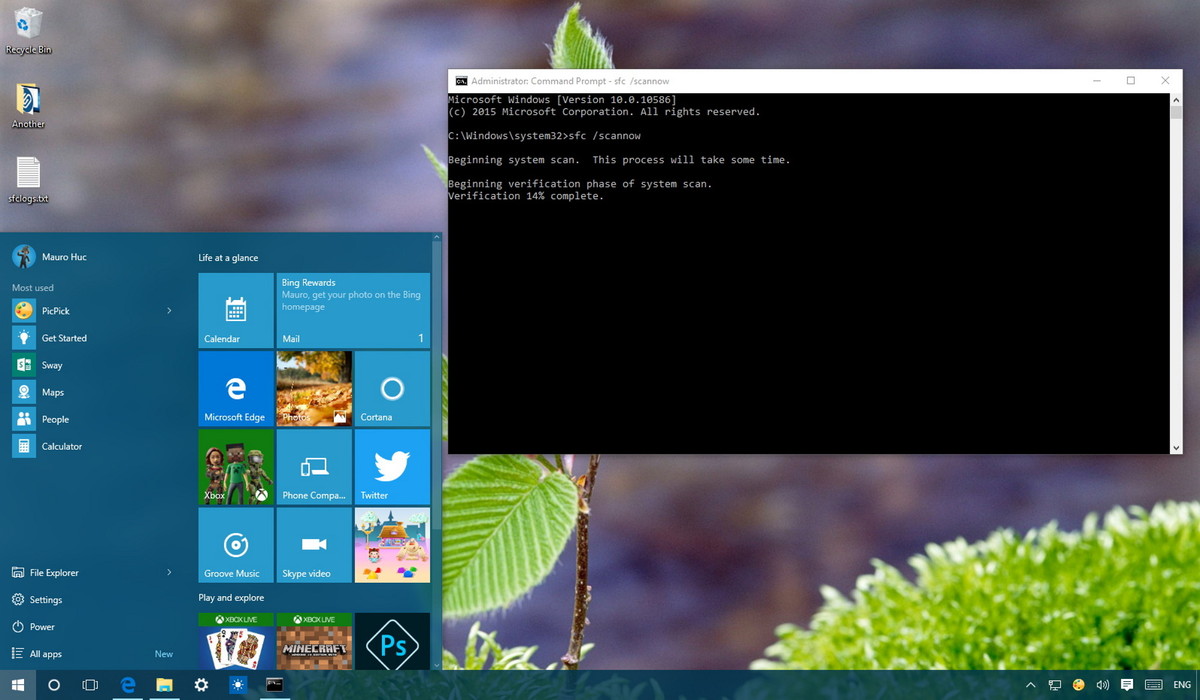
1. How to use SFC /scannow on Windows 10
1. Press the Windows + X key combination to open the Power User Menu and then select Command Prompt (Admin). The reason is because you must run the SFC command under Admin.
2. On the Command Prompt window, enter the command below and press Enter:
sfc /scannow 
3. After the scanning process is completed, you will see one of the following messages on the screen:
• Windows Resource Protection did not find any integrity violations : There were no lost or corrupted files on your system.
• Windows Resource Protection could not perform the requested operation : If this message appears, it means there was a problem during the scanning process and requires offline scanning.
• Windows Resource Protection found corrupt files and successfully repaired them. Details are included in the CBS.Log %WinDir%LogsCBSCBS.log : You will receive this message if SFC was able to fix the problem you encountered. You can now move or view detailed information.
• Windows Resource Protection found corrupt files but was unable to fix some of them: In this case you must fix the corrupted files manually.
2. Run SFC /Scannow on other drives
SFC /Scannow can also be used to check and repair non-system files in other drives, such as D: or external hard drive, USB, SD card or other storage media. To run a scan on such drives, you need to slightly modify the command as shown below. The rest of the process is similar to above.
sfc/scannow/offbootdir=Drive Name: /offwindir=Drive name:windows 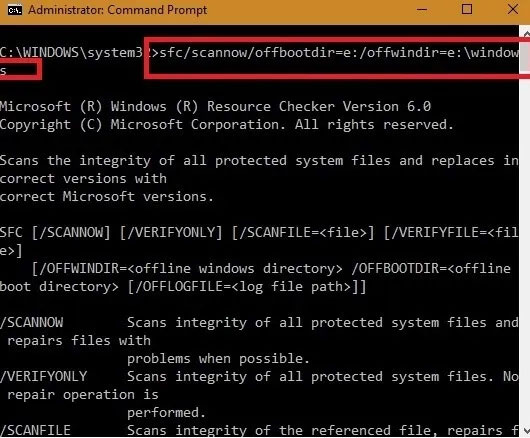
3. View details of the SFC scan process
To view detailed information about a System File Checker stored on the CBS.Log file, you must copy a desktop-readable copy:
1. Press the Windows + X key combination to open the Power User Menu and then select Command Prompt.
2. On the Command Prompt window, enter the command below and press Enter:
findstr /c:"[SR]" %windir%LogsCBSCBS.log >"%userprofile%Desktopsfclogs.txt" 
3. Open sfclogs.txt on Desktop using Notepad. This file will contain all detailed information about scanned system files and information about files that cannot be repaired.
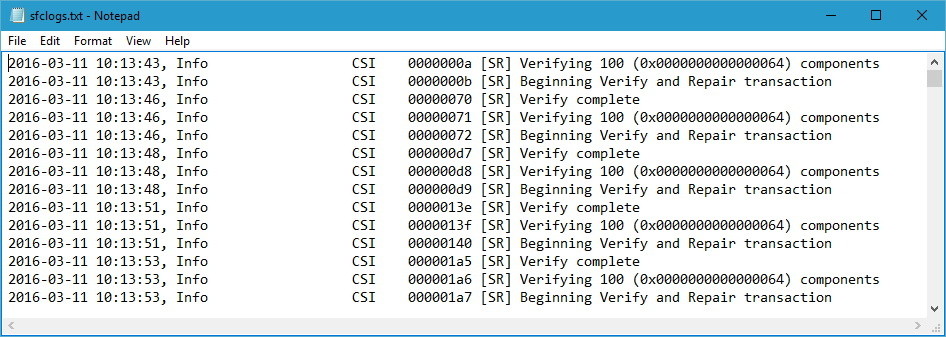
Note : SFC scan details are only available when you scan in Windows, not available when you scan offline in Command prompt.
If you must know what SFC files cannot be repaired, use the Find function in the text application with the phrase 'cannot repair'. You can also use 'repair' and 'repaired' to see any files that have been repaired.
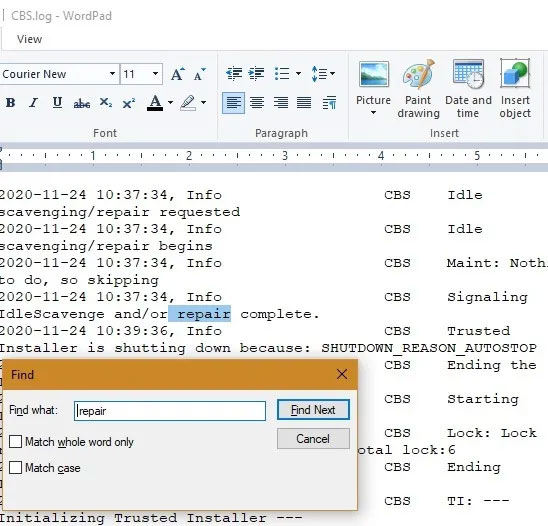
Use "corrupt" to detect corruption in various applications. If the file cannot be easily repaired, then you need to replace and remove it. This is shown in the final status message: 'Windows Resource Protection found corrupt files but was unable to fix some of them' .
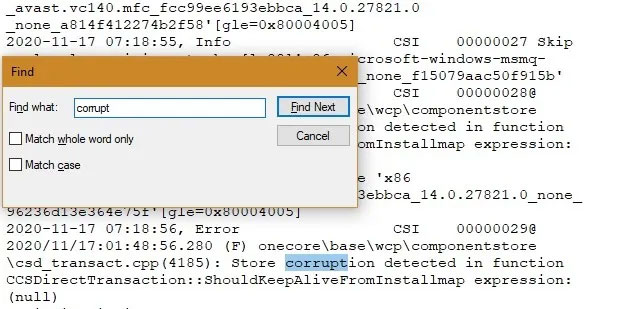
4. Run SFC scan in Safe Mode
If you see a second status message during a system scan: 'Windows Resource Protection could not perform the reques'ted operation' then the SFC scan must be performed in Safe Mode. To access it, select 'Change advanced startup options' from the Start menu.
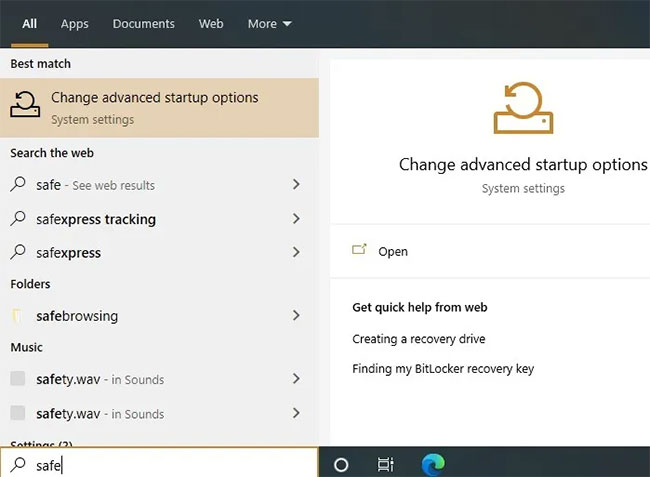
Select 'Restart now' to start Windows 10 in Safe Mode.
A blue screen will appear. Using your keyboard's arrow keys, select Troubleshoot > Advanced options , which will lead to the next screen below.
Select 'Command Prompt' from the available options.
Sign in with your Windows user ID and password. It is better to use the Enter key to quickly navigate these screens.
Now, the Command Prompt screen displays on a blue background in Safe Mode. You can scan the system much faster here, and status verification and alerts don't take much time.
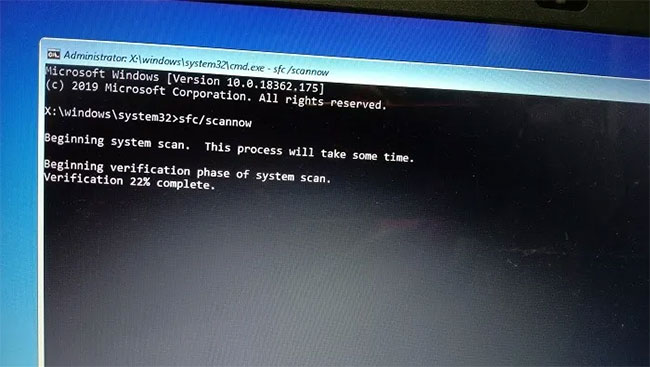
5. Scan and repair system files on Windows 10 Offline
1. Press the Windows + I key combination to open the Settings application.
2. On the Settings interface, click Update & security.
3. Next click on Recovery.
4. Under Advanced startup, click Restart now.
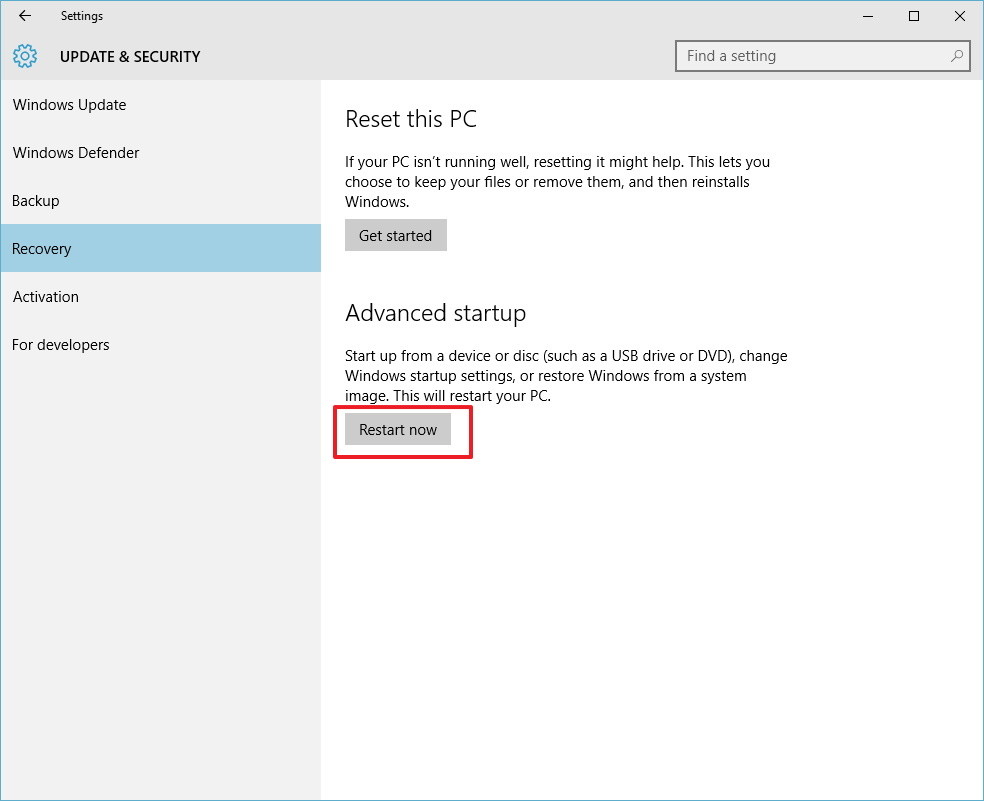
5. Click Troubleshoot.
6. Click to select Advanced options.
7. Click Command Prompt to boot your computer using only Command Prompt.
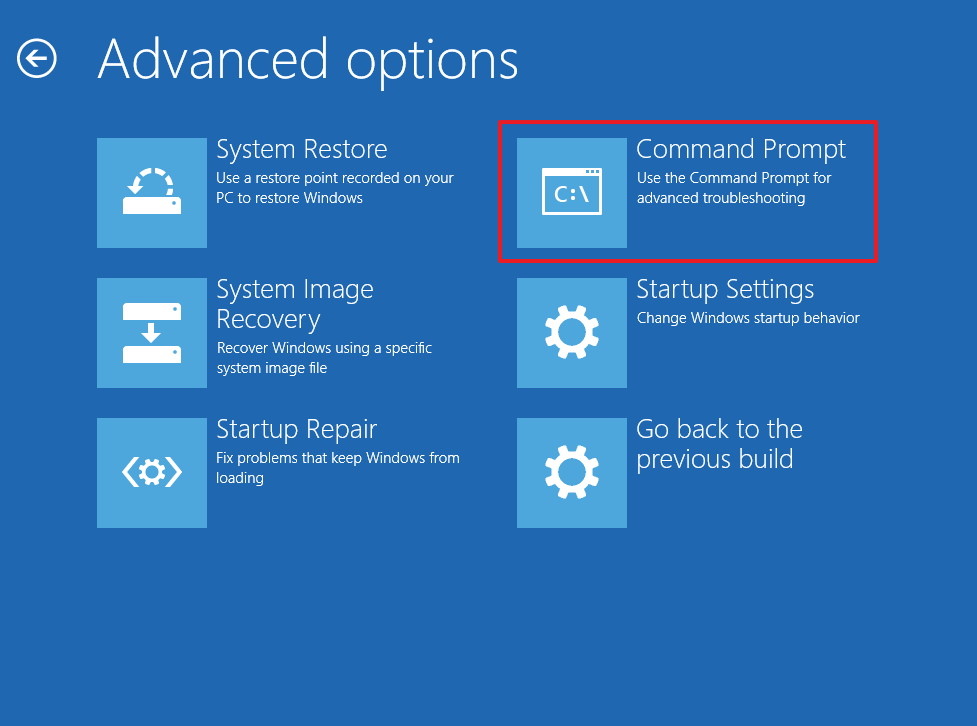
8. During the reboot process, you will receive a notification to enter username (user) and password to continue.
9. Whenever you need to run SFC outside of Windows, you must tell the utility exactly where the Windows installation files are located.
On the Command Prompt window, enter the following command line so that the utility understands the location of the Windows and System Reserved partition:
wmic logicaldisk get deviceid, volumename, description 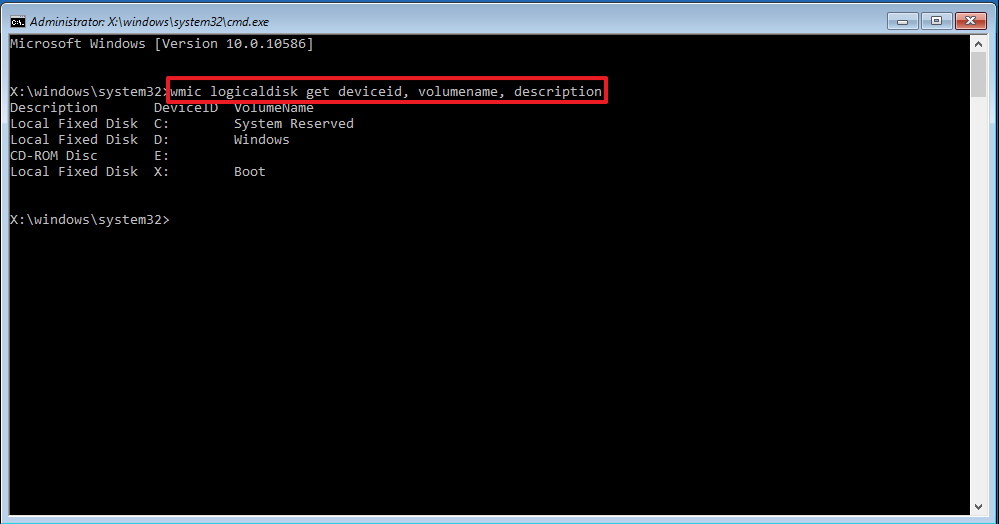
10. Enter the following command into the Command Prompt window and press Enter:
sfc /scannow /offbootdir=C: /offwindir=D:Windows 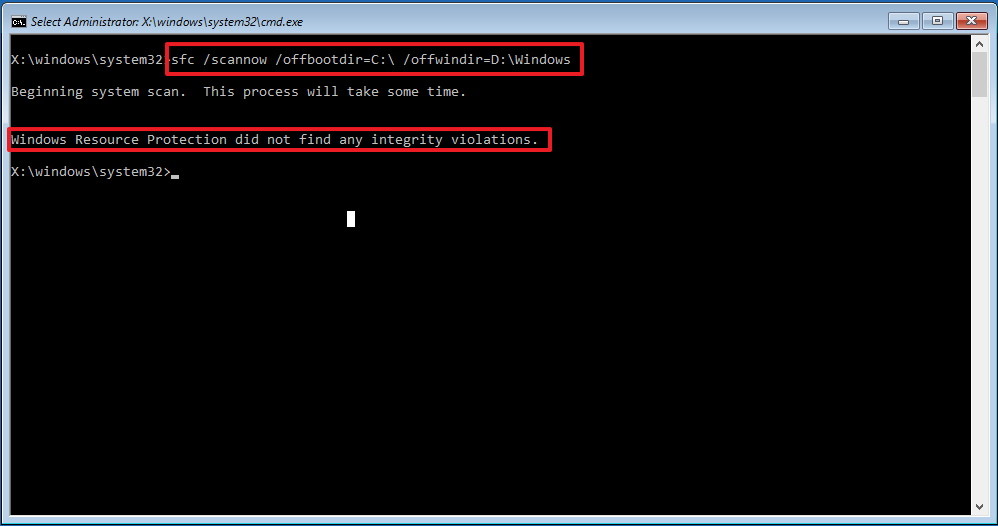
Note:
In the treen command, use /offboodir to switch the specific drive name of the System Reserved partition, in this case C, and /offwindir to switch the specific location of Windows files, in this case D:Windows.
11. After the scanning process ends, close the Command Prompt window.
12. Click Continue to exit and return to Windows 10.
6. Repair system files on Windows 10 manually
If System File Checker cannot fix one or more errors, you will have to fix these files manually.
Open the sfclogs.txt file to see which files are corrupted, search for the file locations and follow the steps below:
1. Press the Windows + X key combination to open the Power User Menu, then select Command Prompt (Admin).
2. On the Command Prompt window, enter the command below and press Enter:
takeown /f C:Path-and-File-NameNote:
Replace C:Path-and-File-Name with the failed path and file name. Such as C:WindowsSystem32appraiser.dll.
3. Allow access to corrupted files under Admin rights by entering the command below into Command Prompt and pressing Enter:
icacls C:Path-and-File-Name /Grant Administrators:F4. Replace the files in the asked section by copying the command below and pressing Enter:
copy C:Path-SOURCE-and-File-Name C:Path-DESTINATION-and-File-NameNote:
In the above command replace C:Path-SOURCE-and-File-Name with the good path and file names, and replace C:Path-DESTINATION-and-File-Name with the destination path and names of the failed files.
Such as:
copy D:Filesappraiser.dll C:WindowsSystem32appraiser.dll5. Type Yes then press Enter to confirm the overwrite.
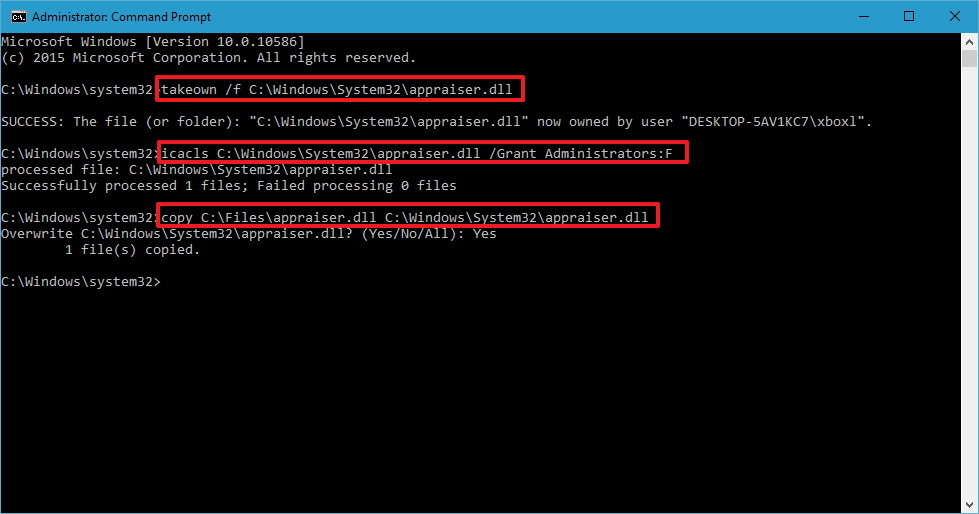
After replacing the files, you can enter the command SFC /verifyonly into the Command Prompt window and press Enter to check the integrity of all files and check which files are corrupted to fix.
Additionally, if you only want to fix certain files, you can check the integrity of each file by using the command:
sfc /VERIFYFILE=C:Path-and-File-NameFor example:
sfc /VERIFYFILE=C:WindowsSystem32kernel32.dllRefer to some more articles below:
Good luck!
You should read it
- Steps to fix error 0x8004FC12 on Windows 11
- How to fix VPN error 619
- Steps to fix errors 0xc0000225 on Windows Vista / 7/8 / 8.1 / 10
- How to fix A20 Error when starting the computer
- Instructions to fix Windows error does not boot
- How to fix CLR error 80004005 on Windows 10
- Fix 0xc00000e9 error in Windows
- Fix keyboard error not working on Windows 10
May be interested
- The convert in Windows command
 the convert command converts file allocation table (fat) and fat32 to the ntfs file system, keeping existing files and folders intact. the drives that have been converted to ntfs file systems cannot be converted to fat or fat32 anymore.
the convert command converts file allocation table (fat) and fat32 to the ntfs file system, keeping existing files and folders intact. the drives that have been converted to ntfs file systems cannot be converted to fat or fat32 anymore. - Ftype command in Windows
 the ftype command displays or modifies the file types used in file name extension links. if used without the assignment operator (=), the ftype command will display the current string of open commands for the specified file type.
the ftype command displays or modifies the file types used in file name extension links. if used without the assignment operator (=), the ftype command will display the current string of open commands for the specified file type. - Fsutil command sparse in Windows
 the fsutil sparse command manages sparse files (a sparse file is a type of computer file that tries to use system space more efficiently when the file is partially empty).
the fsutil sparse command manages sparse files (a sparse file is a type of computer file that tries to use system space more efficiently when the file is partially empty). - The bootcfg raw command in Windows
 the bootcfg raw command adds the option to load the operating system as a string to the operating system entry in the [operating systems] section of the boot.ini file.
the bootcfg raw command adds the option to load the operating system as a string to the operating system entry in the [operating systems] section of the boot.ini file. - The chkntfs command in Windows
 the chkntfs command displays or modifies the automatic disk check when the computer starts. if used without options, the chkntfs command will display the file system of the specified drive.
the chkntfs command displays or modifies the automatic disk check when the computer starts. if used without options, the chkntfs command will display the file system of the specified drive. - Mapadmin command in Windows
 you can use the mapadmin command to manage the username mapping for microsoft services for the network file system.
you can use the mapadmin command to manage the username mapping for microsoft services for the network file system. - The nfsshare command in windows
 you can use the nfsshare command to control the shares on the network file system (nfs).
you can use the nfsshare command to control the shares on the network file system (nfs). - Fsutil command in Windows
 the fsutil command performs tasks related to file allocation table (fat) and ntfs file systems, such as managing reparse points, managing sparse files, or canceling a drive mount.
the fsutil command performs tasks related to file allocation table (fat) and ntfs file systems, such as managing reparse points, managing sparse files, or canceling a drive mount. - The autochk command in Windows
 the autochk command runs when the computer is started and before windows server 2008 r2 starts verifying the logical integrity of a file system.
the autochk command runs when the computer is started and before windows server 2008 r2 starts verifying the logical integrity of a file system. - Setlocal command in Windows
 the setlocal command helps start the process of differentiating environment variables in a batch file. this process will continue until paired with the appropriate endlocal command or the batch file end.
the setlocal command helps start the process of differentiating environment variables in a batch file. this process will continue until paired with the appropriate endlocal command or the batch file end.










 Instructions for upgrading BIOS, how to update BIOS
Instructions for upgrading BIOS, how to update BIOS How to set a password for Windows 10 computer, how to change Windows 10 password
How to set a password for Windows 10 computer, how to change Windows 10 password How to try macOS Sequoia on Mac
How to try macOS Sequoia on Mac Instructions for using Instagram on computer
Instructions for using Instagram on computer Instructions for changing computer wallpaper for Windows
Instructions for changing computer wallpaper for Windows Windows will soon allow text extraction from Android photos
Windows will soon allow text extraction from Android photos